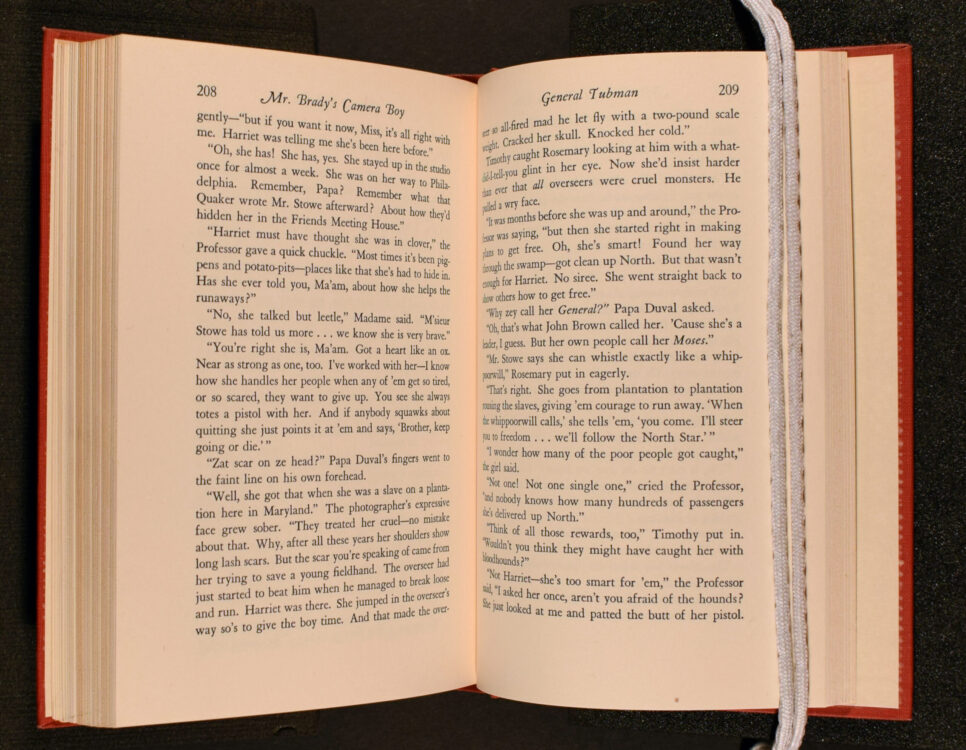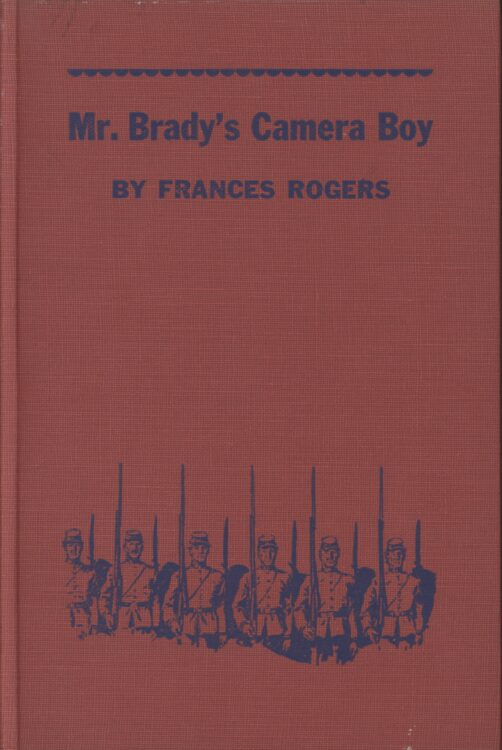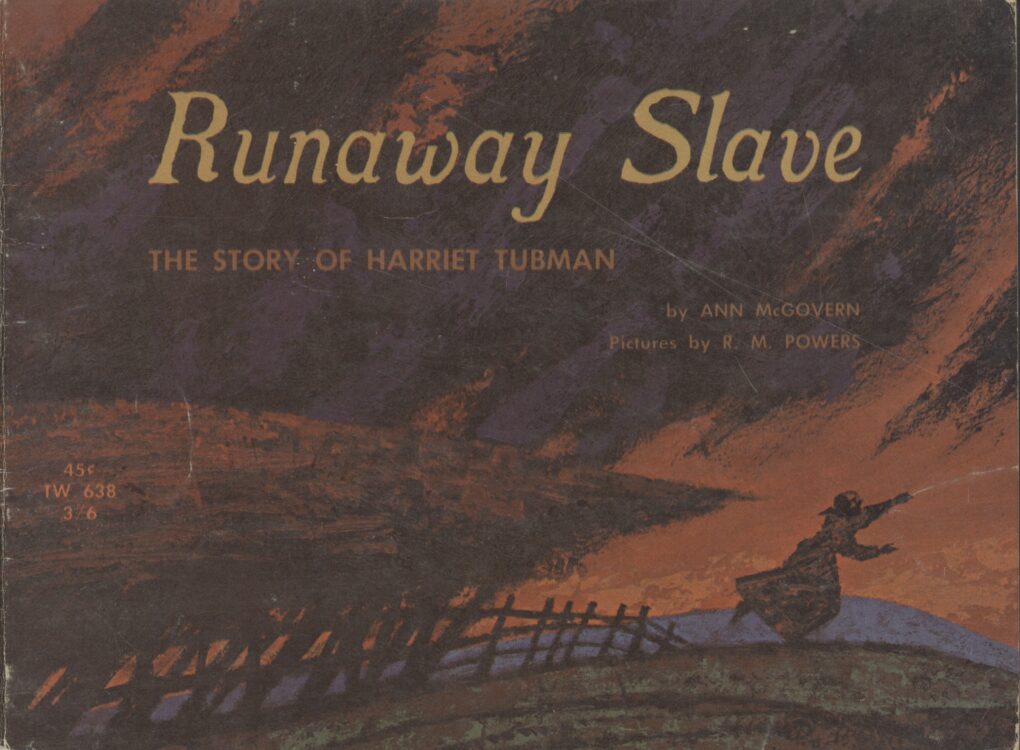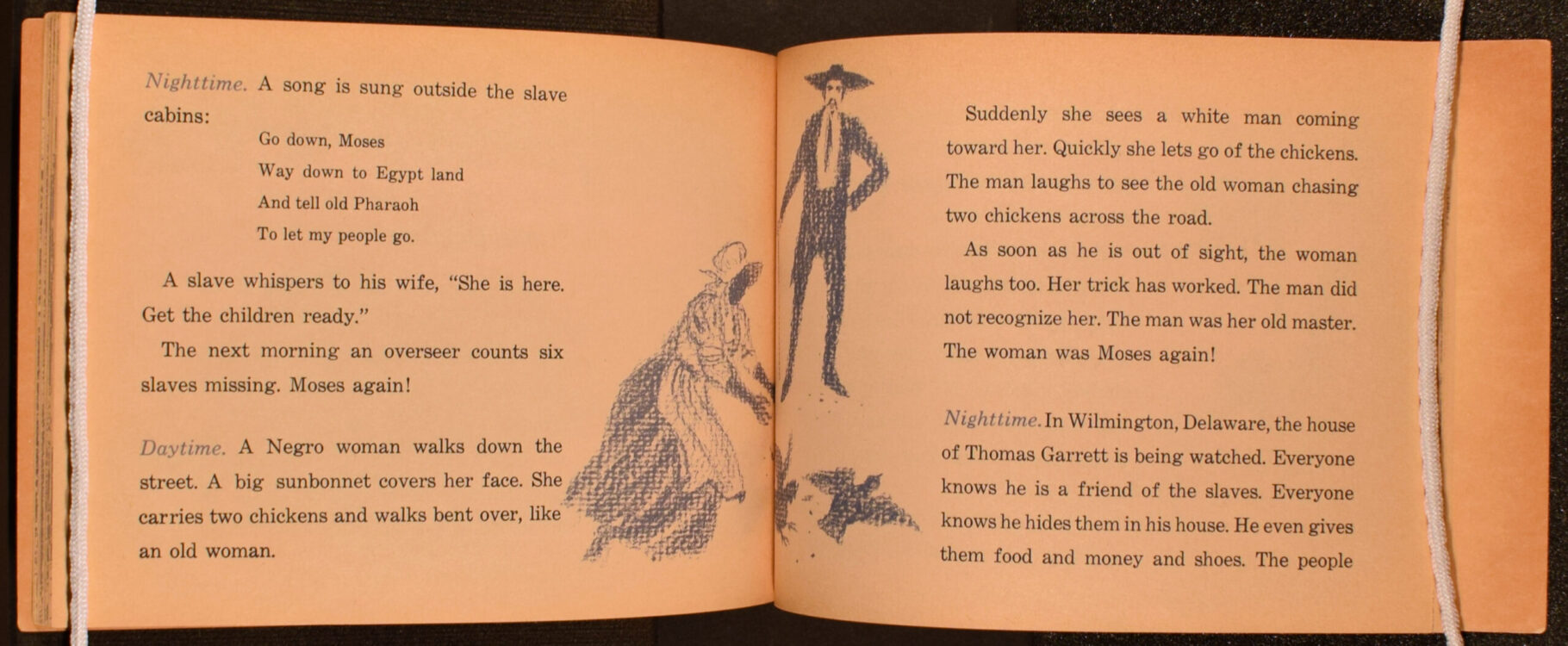Mr. Brady’s Camera Boy
Frances Rogers
1951
Frances Rogers was a white children’s author who most often wrote about history and science—some of her other books include Paul Revere: Patriot on Horseback and Lens Magic. Harriet Tubman plays a minor role in this chapter book, which follows a North Carolina boy named Timothy who goes from being an ordinary traveling photographer’s assistant to working in the studio of famed photographer Matthew Brady in Washington, D.C., just before the outbreak of the Civil War. Over the course of the book, Timothy meets several associates of the Underground Railroad and comes to reexamine his own views on slavery. His new acquaintances relate several stories to Timothy about Harriet Tubman’s skill at dodging capture and guiding others to freedom. Timothy is overcome with awe when he finally meets the woman he has heard so much about, but Tubman only has a handful of lines before she is removed from the narrative. As a result of others telling her story while she is given very little to do, the Harriet Tubman of this book remains a distant yet heroic figure—a contributor to Timothy’s own journey rather than a person in her own right.

Runaway Slave: The Story of Harriet Tubman
Ann McGovern
1965
Ann McGovern had written several children’s books by 1965 and would go on to write many more—in particular, books that presented historical topics in an easy-to-understand format. This picture book is meant to not only teach children about Harriet Tubman, but also introduce them to the concept of slavery in the United States and the basic operations of the Underground Railroad. Despite its simple language, the book is quite comprehensive in covering the many eras of Tubman’s life: her birth, her childhood, her marriage, her escape, and her subsequent work as a conductor. While the book presents guiding others to freedom and avoiding capture as her primary achievements, the final five pages do manage to include an overview of Tubman’s wartime service and her postwar life in New York. The book is structured much like a series of folk hero tales, with every few pages relating a story of Tubman outsmarting her pursuers or extricating herself from a difficult situation.




